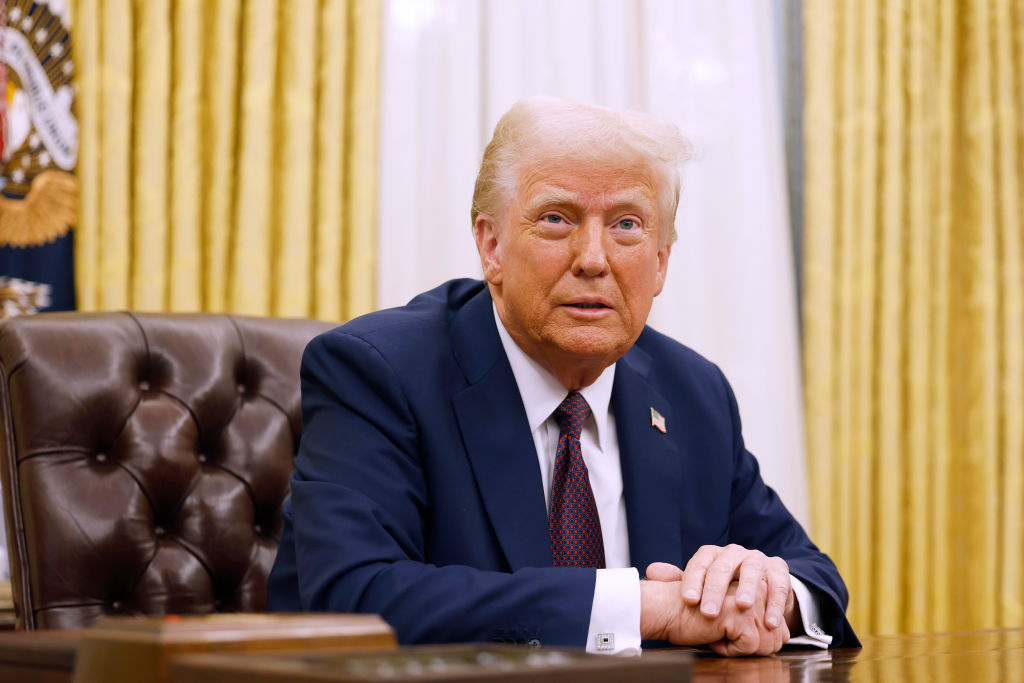U.S. Economy Likely to Improve in 2014
Growth should average about 2.6% to 2.7% this year, and chances are good we'll see a strong finish.
After six long years of very rough sailing, calmer waters lie ahead for the economy. Following the horrific storms of the housing bust, financial crisis and recession as well as the choppy seas of the federal budget sequester, repeated budget and debt dramas plus Europe’s meltdown, it’s a welcome change. Of course, there will still be some swells and dips, such as the unexpectedly low job creation seen in December. And something could go badly wrong — an oil price spike, a plunge in China’s growth rate or a breakdown of Washington’s budget and debt cease-fire. But the likelihood of an upside surprise bringing economic improvement faster than now expected is greater than that of another downside blow.
Right now, we look for an average of 2.6% to 2.7% GDP growth over the course of the year, with the second half of 2014 probably registering stronger quarterly gains than the first. It’s good odds that the pace of growth will end the year at over 3% and remain there in 2015.
Look for job gains to top 200,000 a month frequently, though not necessarily consistently. Surprisingly low December job growth isn’t a harbinger of what’s to come and is likely to be offset in the months ahead. Why? Two industries accounted for a November-December swing of 72,000 in job growth. Both — construction and health care — have been adding jobs and are likely to go back to gaining jobs shortly. Lousy weather probably took a toll on construction employment, which will likely rebound when freezing temps abate. Similarly, health care providers may have refrained from hiring in the final month before Obamacare kicked in. As nervousness about it eases, a resumption of their normal hiring pace seems likely.

Sign up for Kiplinger’s Free E-Newsletters
Profit and prosper with the best of expert advice on investing, taxes, retirement, personal finance and more - straight to your e-mail.
Profit and prosper with the best of expert advice - straight to your e-mail.
The unemployment rate will bounce around, however, as the jobless are encouraged to rejoin the labor force, forcing up the ratio of worker wannabes to workers.
Most of the oomph will come from less-worried consumers spending more. After hitting bottom in 2009, consumer confidence is finally headed back to the range seen around 2004, when the economy was booming and jobs were easy to come by. That, plus job growth, should translate into rising demand across the board, though services, including health care, travel, auto leasing and more, are likely to gain more swiftly than goods. The housing renaissance will also provide a welcome lift, potentially lending extra pop to GDP growth if the push from pent-up housing demand outweighs any dampening from mortgage rate hikes. Tight new-home inventories make that at least a decent bet.
Look for businesses, too, to dip deeper into their bank accounts. On average, they’ll invest nearly 5% more than last year in equipment, machinery and buildings. Indeed, flush with cash, the country’s big firms have the wherewithal to splurge more heavily and they may well do so — especially if federal budget and debt deadlines this spring pass without the usual political sturm und drang. That could also put a bit more pep into 2014 GDP growth.
Exports also hold promise of delivering a little extra this year. Sales abroad will climb by about 5%, as China buys more and Europe’s economy slowly recovers. Energy exports alone — natural gas, gasoline, diesel, etc. — will shoot up by 12%. If that trend strengthens and/or lower energy costs combined with still-low labor costs kick up U.S. competitiveness faster than expected, export gains could shoot even higher. Total imports will also climb, however, as the stronger U.S. economy sucks in more from overseas. They’ll climb by only about 3%, as less oil buying counters some normal growth. But because the U.S. imports so much more than it exports, the trade gap won’t narrow much.
As for government spending, don’t expect much lift from it. States and cities will dole out a bit more this year than last. But Uncle Sam will again spend less this fiscal year than he did last, holding spending by all government — local, state and federal — about flat for the year.
Get Kiplinger Today newsletter — free
Profit and prosper with the best of Kiplinger's advice on investing, taxes, retirement, personal finance and much more. Delivered daily. Enter your email in the box and click Sign Me Up.

David is both staff economist and reporter for The Kiplinger Letter, overseeing Kiplinger forecasts for the U.S. and world economies. Previously, he was senior principal economist in the Center for Forecasting and Modeling at IHS/GlobalInsight, and an economist in the Chief Economist's Office of the U.S. Department of Commerce. David has co-written weekly reports on economic conditions since 1992, and has forecasted GDP and its components since 1995, beating the Blue Chip Indicators forecasts two-thirds of the time. David is a Certified Business Economist as recognized by the National Association for Business Economics. He has two master's degrees and is ABD in economics from the University of North Carolina at Chapel Hill.
-
 The Best Places for LGBTQ People to Retire Abroad
The Best Places for LGBTQ People to Retire AbroadLGBTQ people can safely retire abroad, but they must know a country’s laws and level of support — going beyond the usual retirement considerations.
By Drew Limsky Published
-
 Financial Planning's Paradox: Balancing Riches and True Wealth
Financial Planning's Paradox: Balancing Riches and True WealthWhile enough money is important for financial security, it does not guarantee fulfillment. How can retirees and financial advisers keep their eye on the ball?
By Richard P. Himmer, PhD Published
-
 The New Space Age Takes Off
The New Space Age Takes OffThe Kiplinger Letter From fast broadband to SOS texting, space has never been more embedded in peoples’ lives. The future is even more exciting for rockets, satellites and emerging space tech.
By John Miley Published
-
 Rising AI Demand Stokes Undersea Investments
Rising AI Demand Stokes Undersea InvestmentsThe Kiplinger Letter As demand soars for AI, there’s a need to transport huge amounts of data across oceans. Tech giants have big plans for new submarine cables, including the longest ever.
By John Miley Published
-
 What DOGE is Doing Now
What DOGE is Doing NowThe Kiplinger Letter As Musk's DOGE pursues its ambitious agenda, uncertainty and legal challenges are mounting — causing frustration for Trump.
By Matthew Housiaux Published
-
 A Move Away From Free Trade
A Move Away From Free TradeThe Letter President Trump says long-term gain will be worth short-term pain, but the pain could be significant this year.
By David Payne Published
-
 Trump’s Whirlwind Month of Crypto Moves
Trump’s Whirlwind Month of Crypto MovesThe Kiplinger Letter The Trump administration wants to strengthen U.S. leadership in the cryptocurrency industry by providing regulatory clarity.
By Rodrigo Sermeño Published
-
 Donald Trump Tests His Limits
Donald Trump Tests His LimitsThe Kiplinger Letter President Encounters Legal Obstacles in Pursuit of Ambitious Agenda.
By Matthew Housiaux Published
-
 Another Down Year for Agriculture
Another Down Year for AgricultureThe Kiplinger Letter Farmers brace for falling incomes, widening trade deficits
By Matthew Housiaux Published
-
 What To Know if You’re in the Market for a New Car This Year
What To Know if You’re in the Market for a New Car This YearThe Kiplinger Letter Buying a new car will get a little easier, but don’t expect many deals.
By David Payne Published
